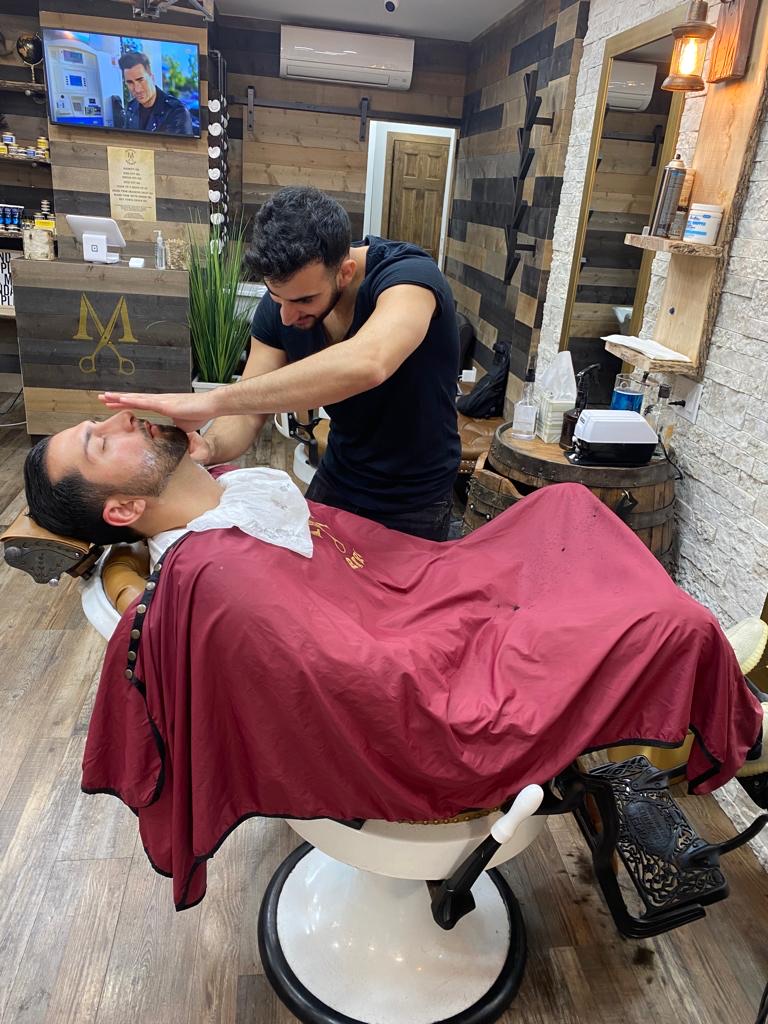Frequently Asked Questions
When it comes to trimming a long beard while maintaining its shape, the best technique involves a combination of precision trimming and strategic layering. First, using high-quality beard scissors or a specialized beard trimmer with adjustable guard lengths allows for controlled trimming, ensuring that the overall length is preserved. It is essential to start by combing the beard with a wide-toothed comb to detangle any knots and to reveal the natural growth pattern. This preparation helps in identifying areas that may require more attention, such as uneven patches or split ends. Employing the point-cutting technique, where the scissors are angled to snip the tips of the hair at various lengths, can create a softer, more textured appearance without sacrificing the beard's overall silhouette. Additionally, utilizing a beard oil or balm post-trim can enhance the beard's health and shine, while also aiding in styling and shaping. Regular maintenance, including trimming the neckline and cheek lines, further contributes to a well-groomed look, ensuring that the beard remains sharp and defined.
To maintain a healthy and well-groomed beard, it is generally recommended that individuals trim their facial hair every four to six weeks. This regular grooming routine helps to eliminate split ends, promote even growth, and maintain the desired shape and style of the beard. By adhering to this schedule, one can ensure that the beard remains tidy and free from unruly hairs, which can detract from its overall appearance. Additionally, regular trimming encourages thicker growth by stimulating hair follicles, contributing to a fuller and more robust beard. Incorporating beard oils and balms during this maintenance process can further enhance the beard's health, providing essential moisture and nourishment while preventing dryness and itchiness. Ultimately, consistent trimming not only preserves the aesthetic appeal of the beard but also supports its vitality and strength.
Achieving a precise beard trim requires a selection of essential grooming tools that ensure accuracy and finesse. A high-quality beard trimmer, equipped with adjustable guard lengths, allows for customizable cutting lengths, enabling the user to achieve a uniform and tailored look. Additionally, a pair of sharp barber scissors is crucial for snipping away split ends and refining the edges for a polished finish. A fine-toothed comb aids in detangling and aligning the beard hairs, ensuring an even trim throughout. For detailing, a precision trimmer or edger is indispensable for shaping the neckline and cheek lines, providing clean contours that enhance facial structure. Lastly, a quality beard oil or balm can help in softening the hair and maintaining skin health, ensuring that the beard not only looks sharp but also feels comfortable and well-groomed. Together, these tools create a comprehensive grooming kit that facilitates a meticulous and stylish beard trim.
To enhance facial features through beard trimming, one must consider the unique shape of the face, whether it be oval, square, round, or heart-shaped. For individuals with a square jawline, a well-groomed beard with softer edges can create a more balanced appearance, while those with a round face may benefit from a longer, angular beard that elongates the visage. Utilizing precision tools such as clippers, trimmers, and scissors, one can achieve defined lines along the cheeks and neck, ensuring a clean neckline that accentuates the jawline. Incorporating techniques like fading or tapering can add dimension and depth, while maintaining a consistent length on the sides can help frame the face effectively. Additionally, regular grooming practices, including the use of beard oils and balms, can enhance texture and shine, further highlighting the facial contours. Ultimately, the key lies in personalizing the beard style to complement individual features, creating a harmonious balance that draws attention to the eyes and cheekbones.
When it comes to trimming a patchy beard, several best practices can enhance its overall appearance and promote a more uniform look. First, it is essential to assess the beard's growth pattern and density, identifying areas of thickness versus patchiness. Utilizing high-quality grooming tools, such as precision trimmers and sharp scissors, allows for meticulous shaping and contouring. Starting with a longer guard on the trimmer can help maintain length while gradually reducing it to achieve a more blended effect. Regularly combing the beard with a fine-toothed comb can help in identifying uneven spots and facilitate an even trim. Additionally, incorporating beard oils and balms can nourish the hair follicles, promoting healthier growth and improving the texture of the beard. Finally, maintaining a consistent grooming routine, including regular trims every few weeks, can help manage patchiness and encourage a fuller appearance over time.

